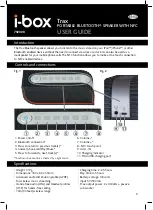
Always wear eye protection when performing service, maintenance or installation procedures.Other
safety equipment to consider would be hearing protection, gloves and possibly a full face shield,
depending on the nature of the task.
General Guidelines
●
Keep children away from the generator.
●
To prevent accidental or remote starting while working on the generator, disconnect the negative
(-) battery cable at the battery.
●
Keep the generator and its compartment clean. Excess oil and oily rags can catch fire. Dirt and
gear stowed in the compartment can restrict cooling air.
●
Make sure all installed fasteners have been secured and torqued properly.
●
Do not work on the generator when mentally or physically fatigued or after consuming alcohol or
drugs.
●
Used engine oil has been identified by some state and federal agencies as causing cancer or
reproductive toxicity. Do not ingest, inhale or allow bare skin to come into contact with used oil or
its vapors.
●
Benzene and lead in some gasoline mixtures have been identified by some state and federal
agencies as causing cancer or reproductive toxicity. Do not ingest, inhale or allow bare skin to
come into contact with gasoline or its vapors.
●
Keep multi-class ABC fire extinguishers handy. Class A fires involve ordinary combustible
materials such as wood and cloth; Class B fires involve combustible and flammable liquid fuels
and gaseous fuels; Class C fires involve live electrical equipment.
●
Installation and operation of the generator must comply with all applicable local, state and
federal codes and regulations.
The Exhaust Produced By The Generator Is Deadly
Substances in combustion exhaust gases have been identified by some state and federal agencies to
cause cancer or reproductive toxicity. Do not breathe in or come into contact with exhaust gases.
Carbon monoxide is produced as part of the combustion process and is a poisonous gas. Inhalation of this
gas can cause serious personal injury or death. Make sure carbon monoxide is not being inhaled by
occupants of the vehicle as well as others working on or around the generator.
1. Learn the symptoms of carbon monoxide poisoning. Carbon monoxide is colorless, odorless,
tasteless and non-irritating. It cannot be seen or smelled. Exposure to even low levels of carbon
7









































